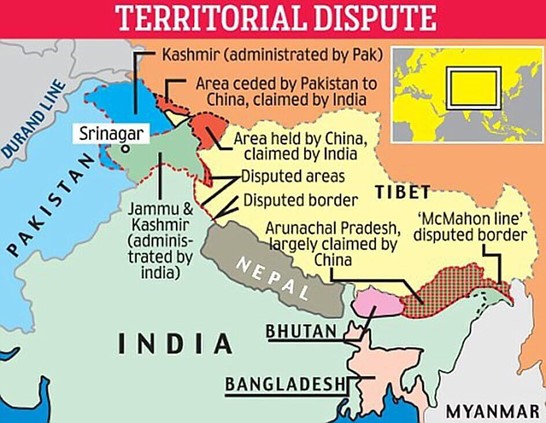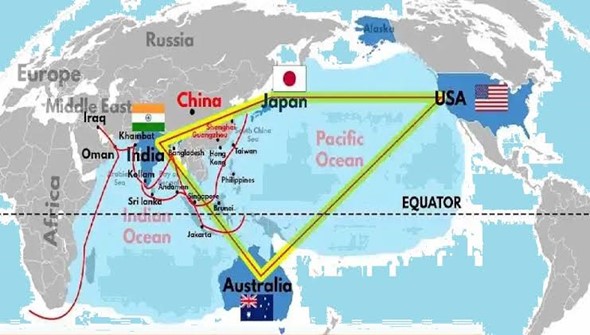The recent meeting of Quad in September led to the Wilmington declaration. Although not said, it’s very clear that Quad is turning into a security alliance, and the major objective of Quad is to counter China’s influence, particularly in the Indo-Pacific region.
Relevance: GS2 (International relations)
Practice question: Discuss the significance of India’s involvement in the Quad and its impact on the Indo-China relationship. Suggest measures for India to maintain a balance between strategic autonomy and deepening ties with like-minded democracies. (250 words)

Quad evolution and significance for India
Four democracies, India, the US, Japan and Australia, came forward and created Quad for a free, open and inclusive Indo-Pacific Region. Initially claimed to be a non-military group, it was seen as a platform to counter China’s aggression in the region.

Wilmington declaration :
•It is the Fourth Quad Leaders summit hosted by the USA
● Quad’s Commitment:
Reaffirmed commitment to peace, stability, and prosperity in the Indo-Pacific.
● China’s aggressions:
Condemned China’s maritime aggression in the South China Sea and urged adherence to international law.
● Taiwan Support:
Reaffirmed support for Taiwan’s peace and stability.
● Multilateral Cooperation:
Pledged to promote economic, technological growth and health security
India’s strategic move :
Through Quad, India affirms its key position in the region, countering China’s assertiveness, and pursues its economic and strategic interests like trade routes and important sea lanes.
India china relation :
● Historical context :
India and China have complex, unresolved border disputes dating back to the McMohan line and the 1962 war. Recent standoffs at Galwan Valley have escalated tensions. The line of actual control remains a flashpoint
● Stalemate :
Multiple rounds of talks between countries didn’t help in disengagement across flashpoints like Galwan, Depsang Plains and Demchok. India is modernising its military while increasing its vigilance across LAC, and China is increasing its military budget.
● China’s assertiveness :
China has shifted from earlier President Deng Xiaoping’s strategy of “hide your strength, bide your time” to testing its neighbours and showing no interest in territorial issue compromises.
Challenges for India :
Balancing Quad engagement and a delicate relationship with China is a strategic challenge. India, with non-alignment and strategic autonomy doctrine, calls for careful diplomacy. It should increase its ties with the West and avoid unnecessary escalation with China.
India’s dilemmas :
India’s traditional foreign policy is rooted in non-alignment and strategic autonomy. Joining any formal defence grouping hampers India’s foreign policy independence, and at the same time, Quad provides a framework to address common security challenges without compromising its autonomy. China is very critical of Quad, calling it a mini-NATO and Asia’s NATO. China’s growing threat perception about Quad may increase hostility.
Military modernisation and assertive posture :
● India’s military preparedness :
India is deploying more forces despite winter along LAC. India is modernising its military equipment like long-range weapon systems, artillery, and rocket systems :
● China’s Assertive Military Budget:
To counter India’s geographical advantage and international collaborations, China is spending heavily on its military
● Geopolitical implications :
- Indo-Pacific regions turning platform for strategic competition for global powers.
- In response, China may promote closer ties with Pakistan
- US-China rivalry may compel southeast nations to take sides.
Key steps India needs to maintain :
- India should call for nuanced diplomacy, considering long-term perspective.
- India should focus on enhancing infrastructure along the LAC to ensure swift mobilisation of troops and resources.
- India should act as a balancing power, ensuring regional tensions shouldn’t blow out of proportion and keep rule-based order in the Indo-Pacific region.
- India should engage China in dialogues of trade, climate change and other areas where both countries have common interests.
Conclusion
Post Wilmington. Declaration there is a significant shift in geo-political dimensions in the Indo-Pacific region. India should face the challenge of maintaining Western ties along with improving relationships with China. A careful approach is needed where India maintains its strategic autonomy and interests without unnecessary escalation with China.



